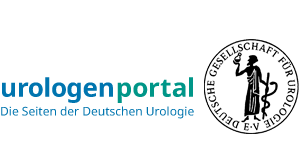Mediathek
Miniaturized percutaneous nephrolithotomy with Moses laser litotripsy
Abstract
Miniaturized percutaneous nephrolithotomy with Moses laser lithotripsy
T. Knoll, J. Dlugosch, G. Wendt-Nordahl, N. Atassi
Klinikum Sindelfingen-Böblingen, Universität Tübingen, Klinik für Urologie, Sindelfingen, Deutschland
Introduction: Flexible ureteroscopy (fURS) has replaced extracorporeal shock wave lithotripsy as the treatment of choice for small and medium sized renal stones, while percutaneous nephrolithotomy (PNL) is considered being the
standard for large stone masses. However, recent studies have shown that stone free rates after fURS are worse than assumed. Recently, the availability of a wide range of miniaturized PNL (mPNL) systems has led to an increased use of percutaneous techniques even for smaller stones. A systematic review of the EAU Guideline Office supports this approach by demonstrating excellent efficacy and most probably lower morbidity than standard PNL. Furthermore, new holmium lasers offer a comprehensive choice of different settings to adapt disintegration to individual situations. We demonstrate our technique of miniaturized PNL by using a last generation high-power holmium laser.
Methods: We perform a standardized approach for all percutanteous procedures. Briefly, the procedure starts with the patient in lithotomy position and cystoscopy for retrograde study and placement of a ureteral balloon occlusion catheter, which is connected to a Foley catheter. The patient is then turned into flat prone position. The puncture is performed under combined ultrasound and fluoroscopy guidance, followed by dilatation using the selected single step dilator, over which the sheath is inserted. If a multi-tract approach appears necessary, all punctures are performed in the beginning and wires are placed. Then dilatation is started usually by using a lower pole access, further dilatations are performed if required. Our most commonly used sheath size is 17.5F, as it allows the use of a 15F flexible nephroscope (Karl Storz, Germany). Laser lithotripsy is performed by use of a high-power holmium laser (Moses 120H, Lumenis, Israel). Depending on the course and outcome of the procedure, we either place a 16F nephrostomy or perform a tubeless procedure with antegrade stenting.
Results: We demonstrate the excellent efficacy of the use of mPNL in a patient with multiple, medium-sized stones. The Moses mode of the holmium laser improved the efficacy of the procedure by better energy transmission and less stone retropulsion, especially in this case with multiple mobile stones. The procedure time including placement of the ureteral catheter was 72 min. and achieved, proven by postop NCCT full stone clearance. A tubeless procedure with antegrade stenting was performed. Intra- and postoperative complications did not occur, hospital stay was 2.5 days. The antegrade stent was removed 1 week later.
Conclusion: In summary, we demonstrate that miniaturized PNL with a last generation holmium laser is a safe and efficient option for medium-sized stones and a strong competitor to flexible URS.


